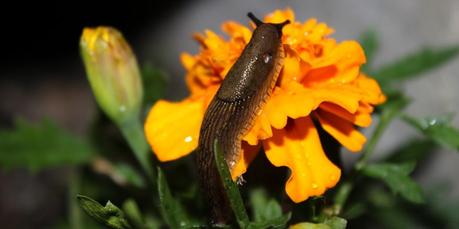
A lush and vibrant garden is a source of pride and joy for any gardener, but the presence of slugs can quickly turn your haven of blooms into a feeding ground for these slimy pests. Slugs can wreak havoc on your plants, leaving behind unsightly holes and decimated foliage. Fear not, for there are effective and eco-friendly methods to reclaim your garden from these pesky invaders.
In this article, we will delve into a variety of strategies to help you get rid of slugs and maintain a thriving garden paradise.
What Are Slug?
Before we delve into the methods to eliminate slugs, it's important to understand the enemy we're dealing with. Slugs are soft-bodied creatures that thrive in damp and moist environments. They are most active during the evening and night, using their rasping mouthparts to munch on leaves, stems, and fruits of a wide range of plants.
1. Cultural Practices
a) Maintain Garden Hygiene:
Keeping your garden clean and free of debris will discourage slugs from finding hiding spots. Regularly remove fallen leaves, mulch, and decaying matter that can serve as shelter for slugs.
b) Proper Watering:
Avoid over-watering your garden, as excess moisture creates a welcoming environment for slugs. Water your plants in the morning so that the soil has time to dry out during the day.
2. Physical Barriers
a) Copper Barriers:
Slugs dislike crawling over copper surfaces due to a mild electric shock they experience. Placing copper tape or strips around plant containers, raised beds, and other vulnerable areas can deter slugs effectively.
b) Eggshell Mulch:
Crushed eggshells create an abrasive surface that slugs dislike. Scatter them around the base of plants to act as a natural barrier.
3. Natural Predators
a) Encourage Wildlife:
Attract natural predators like birds, toads, and ground beetles to your garden. These creatures feed on slugs and can help keep their population in check.
b) Release Nematodes:
Beneficial nematodes are microscopic organisms that prey on slugs and other soil-dwelling pests. These tiny allies can be watered into the soil to target slug larvae.
4. Organic Controls
a) Beer Traps:
Sink shallow containers into the soil and fill them with beer. Slugs are drawn to the scent, fall in, and drown. Empty and refill the traps regularly.
b) Diatomaceous Earth:
This natural powder, made from fossilized algae, has sharp edges that cut into the slugs' bodies, causing them to dehydrate. Dust it around plants but avoid applying it directly to the foliage.
5. Plant Selection and Placement
a) Slug-Resistant Plants:
Choose plants that are less appealing to slugs, such as ferns, lavender, rosemary, and certain types of ornamental grasses.
b) Elevated Planters:
Planting in raised beds or containers can reduce slug accessibility to your plants. This also provides better drainage and makes it harder for slugs to reach the plants.
6. Organic Slug Baits
Iron Phosphate Baits:
These eco-friendly baits are safe for pets, wildlife, and humans. They contain iron phosphate, which is consumed by slugs and causes them to stop feeding, eventually leading to their demise.
Conclusion
Maintaining a thriving garden requires vigilance and a proactive approach to pest control. By combining a variety of strategies, from cultural practices to natural predators and organic controls, you can effectively manage and get rid of slugs in your garden. Remember, a slug-free garden not only enhances the visual appeal but also fosters a healthy environment for your cherished plants to flourish. With these methods in your gardening arsenal, you're well on your way to enjoying a vibrant and pest-free outdoor oasis.

